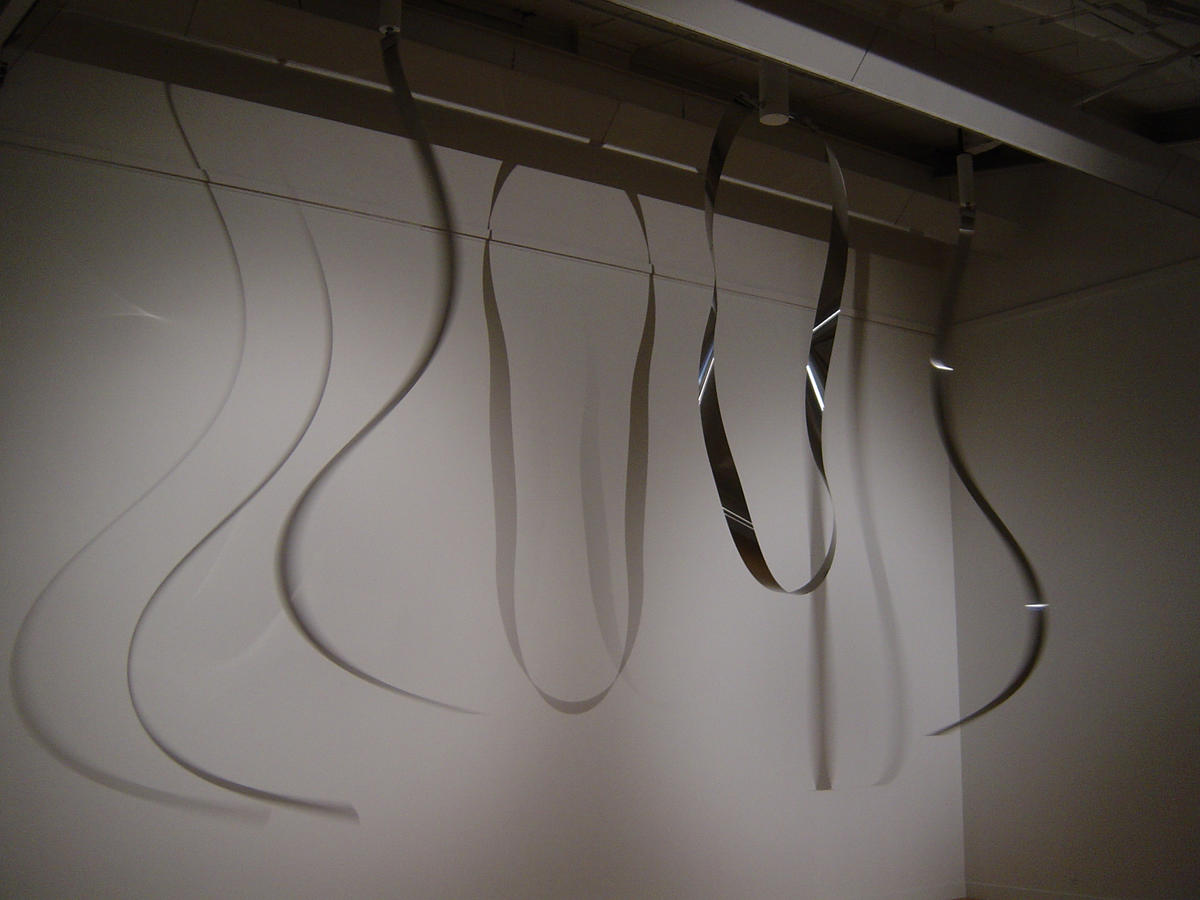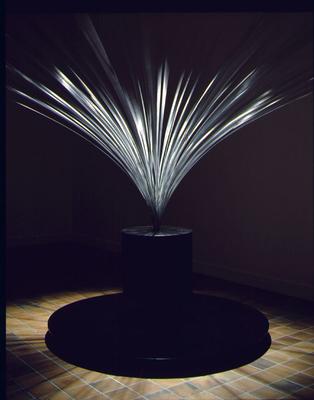Trilogy (A Flip and Two Twisters)
-
Len Lye
b.1901
d.1980

Title
Trilogy (A Flip and Two Twisters)
Details
| Production Date | 1977 2016 |
|---|---|
| Collection(s) | Collection Govett-Brewster Art Gallery, New Plymouth |
| Accession Number | 77/1 |
| Media | Stainless steel with motors |
| Measurements | Approximately 7000 x 9000 x 1000mm |
About
Two 20 foot (6.1m) bands of stainless steel hang still and silently from the Gallery ceiling. They flank another length of steel held at both ends, forming an immense torqued loop. As the lights come on, the hanging ‘Twisters’ jump to life; their loping twirl stops suddenly with a thunderous, resonant clang. Restarting faster, they form a harmonic ‘s’ curve and once again come to a screeching halt. The ringing call of the metal lingers in the gallery as the central ‘Flip’ slowly turns itself inside out with a ferocious convulsion. Trilogy’s furious drama of tension and release accelerates until, standing on an upper deck, one can feel the currents of air stirred by the monstrous serpentine figures. In the viewing gallery jaws drop and smiles crack, nerves and muscles tense and relax along with the work. The experience of Trilogy is one of pleasure and fear as its awesome kinetic energies seem to go right through the body. Like many of Len Lye’s kinetic sculptures, Trilogy reveals our porous relationship to the external world.
Trilogy was commissioned by the Govett-Brewster Art Gallery on the occasion of Len Lye’s 1977 exhibition Kinetic Works. It is the culmination of Lye’s programmed steel sculpture, and the only one built during his lifetime on the grand scale he envisioned. The work was fabricated by John Matthews in New Plymouth. After spending some weeks with Lye in his New York studio, Matthews returned to his Fitzroy Engineering workshop with the task of producing an eight foot (2.5m) version of the work similar to one owned by Berkeley Art Museum. After nine months, Matthews had perfected the model, but when he returned to New York to show the results, Lye announced that to get the scale right for the Gallery, the work would have to be at least twice the size. That such a thing was even possible was by no means clear, but Matthews persevered, and with the help of electronic controls developed in New Plymouth specifically for the work’s 1/20th horsepower motors, the gargantuan Trilogy was realised. Drawing crowds during its infrequent exhibitions, it remains a key work in the Govett-Brewster Art Gallery’s permanent collection.

